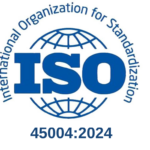A critical part of the process of investigating WHS incidents in the workplace is to identify how the incident occurred in order to ensure it (or other similar incidents) won’t happen again.
Without thoroughly investigating the causes of an incident, it is difficult to determine what changes can be made to prevent recurrence.
Systematically progressing through the following steps can assist in ensuring a thorough identification of the causes of the WHS incident:
- Consider how workers were involved in the incident – were they trained and competent for the task, were they fit for work (not fatigued, sick, under the influence of alcohol etc.), were all required licences for the task in place and up to date, was the time of the incident at the end of a long shift, etc.
- Consider how external and/or internal environmental factors may have affected the task being undertaken during the incident – for example were there wet and oily road surfaces, were workers experiencing excessive heat or cold, was lighting appropriate to the task, was the workspace tidy and organised?
- Check whether any materials or hazardous chemicals were involved in the incident, and if so whether systems of work and appropriate worker training were in place for appropriately dealing with these.
- Consider the plant/equipment involved in the incident – was it fit for purpose, was it maintained, did workers have appropriate training in its use, was guarding required and in place?
- Determine if safe systems of work were prepared, implemented and being used – this also includes whether risk assessments for the task were properly undertaken and documented.
If all of the above factors are properly explored, opportunities for improvement (OFIs) will usually be found in even the best managed workplaces. Consulting with the workers about these OFIs, risk assessing them to ensure they don’t introduce any new risks, and implementing them as soon as possible, will help to keep your workers safe and prevent a recurrence of the incident.
Please contact QRMC for more information.











